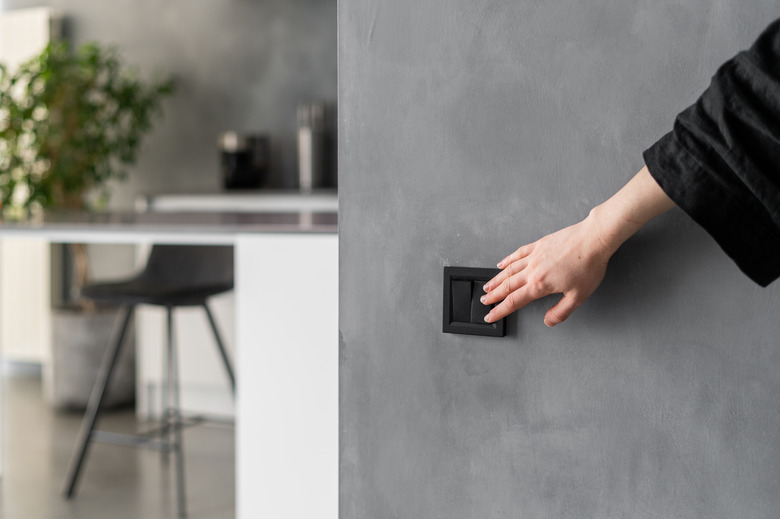How To Wire Two Switches To One Light Fixture
We may receive a commission on purchases made from links.
When you wire two switches to a single light fixture, you need special switches confusingly called three-way switches. The reason for the nomenclature is somewhat obscure, but the best guess is that each of these switches has three terminals. They are single-pole, double-throw (SPDT) switches that control a single circuit (single pole) but can be "on" in one of two positions depending on the position of the other switch (double throw).
You always wire three-way switches in pairs, and there are three different configurations that affect how you do the wiring. The first is when the switches come before the fixture in the circuit, the second is when the fixture is between the switches, and the third is when both switches come after the fixture. In all configurations, you need an extra hot wire to connect the switches, and you get it by using three-conductor cable, which has both a black and red hot wire as well as a white return and a bare ground wire.
Here's what you need to know about wiring two switches to control one light fixture.
General Switch Wiring Procedure
General Switch Wiring Procedure
Whenever you wire a switch or any other electrical device, you first have to feed cable to the electrical box mounted on the wall, and you have to make sure the power is off. Testing wires with a noncontact voltage tester is always a good idea before you touch them.
When wiring a simple switch, you need at most two cables: One supplies power (the line cable), and one feeds the fixture (the load cable). The switch interrupts the hot leg of the circuit, so the black wires from the line and load cables are connected to the switch terminals, and since the return leg of the circuit bypasses the switch, you twist the white wires together and cap them. When the switch comes after the fixture, there's no return wire. Instead, there's a single cable with the white wire taped black to indicate that it's hot, and both this and the black wire get connected to the switch terminals.
Wiring Both Switches Before the Light Fixture
Wiring Both Switches Before the Light Fixture
Three-way switches have three terminals; two are brass and one, known as the common, is black. When both switches come before the light fixture, one will be closer to the power source and one closer to the fixture. Here's how to wire the one closest to the power source:
- Connect the black line wire to the common terminal.
- Connect the red and black wires that join the switches together to the two brass terminals.
- Twist the white wires together and cap them.
- Twist or clamp the ground wires together and connect them to the green ground terminal on the switch.
Moving on to the second switch, here's how to wire that:
- Connect the red and black wires from the first switch to the brass terminals.
- Connect the black load wire (going to the fixture) to the common terminal.
- Twist and cap the white wires.
- Connect ground wires to the ground screw.
Wiring the Other Configurations
Wiring the Other Configurations
In the first of the other two configurations, the line cable comes to the fixture.
- Join the black line wire to the white one going to the first switch and wrap black tape around the white wire to indicate that it's hot.
- At the first switch, splice the white wire taped black to the white wire going to the second switch, which also gets taped black. Connect it to the common terminal on the second switch.
- Connect the white line wire to the neutral terminal on the fixture and the black wire going to the first switch to the hot terminal.
- Connect the black wire from the fixture to the common terminal on the first switch.
- Finish by connecting the red and black wires between the switches to the brass terminals on the switches.
When the fixture is between the switches, wire the switch that has the line cable first.
- Connect the black hot wire to the common terminal and the red and black wires going to the second switch to the two brass terminals. Splice the white wires together.
- At the fixture, connect the white wire from the first switch to the neutral terminal and the black wire going to the second switch to the hot terminal. Splice the red and black wires together to continue on to the second switch. Since you just used the black wire from the second switch, you have to use the white wire as a hot wire. Wrap that wire in black tape on both ends and splice it to the black wire coming from the first switch.
- Finish at the second switch by connecting the red wire and the white one with black tape to the two brass terminals and connecting the black wire to the common terminal.
